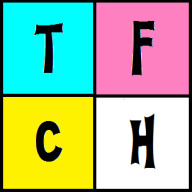Drats! I’m Late Again!

Another excerpt from my draft one document for The Four Color, this time talking about the inclusion of hero-focused subplots.
Subplots
A Subplot is a story within a story. It occurs during an Issue, but a Subplot is not the main focus that the Issue. Subplots give the Writers and Editor a chance to explore the more mundane facets of a hero’s life. The use of Subplots puts the Writer in the driver’s seat for determining the elements of his hero’s Subplot.
The Writer’s Outline
Preparing a Subplot to present to the Editor requires answering a few questions.
What Is the Conflict? Subplots must have some sort of conflict, but those conflicts seldom involve actual combat. Instead, the conflicts tend to be personal or interpersonal. Diesel missed his last date with Irene because he was saving a busload of children, and Irene is displeased with being stood up yet again. Diesel has promised her that he’ll make it up to her. What sort of comedy of errors might ensue?
What Introduces the Conflict? Your hero becomes aware of the Subplot somehow. Does Diesel bring Irene flowers as an apology only to be roundly rebuked?
Who Else Is Involved? Are any other heroes part of the Subplot? If so, what do those heroes (and their Writers) know about the Subplot before it begins? Also, what non-hero characters are involved, and what roles do those non-hero characters play? Keep in mind that while a Subplot does shift the focus to a specific hero, it’s generally bad form to leave the other players sitting around with nothing to do for too long. More on this below under The Editor’s Outline.
How Might the Conflict Resolve? It helps to give the Editor an idea or three about expected possible outcomes for a Subplot. A Subplot with only one possible outcome is possible, of course, but a degree of uncertainty can increase dramatic tension and make for a more satisfying resolution.
The Editor’s Outline
Once the Editor has received a Subplot outline from a Writer, the Editor must review the proposed Subplot, keeping in mind questions such as these:
How Does the Subplot Fit? Perhaps the most important consideration for the Editor is how easily the Subplot can fit into the current Issue. Diesel trying to keep that important date with Irene might be a great idea for a Subplot, but if Diesel is currently trapped in the Dimension of Rage, it could be really difficult justifying shifting focus a bit toward his dating problems. If the Subplot does fit the current Issue, develop some idea about how the Subplot will interrupt or mesh with the main action of the story.
Will the Subplot Be Fun? The second most important question relates to fun, and that includes fun for everyone at the table, not just the Writer of the Subplot. As mentioned above, it’s bad form to expect the other Writers to be passive spectators to someone else’s fun. For example, years ago, I GMed a short-lived superhero campaign. One of the heroes was a surly, rebellious teenage girl with fabulous powers who skipped school and snuck out of the house to fight crime. We started one session with a Subplot about her parents staging an intervention. The other players took on the roles of the girl’s concerned parents, her pastor, and a professional psychologist. For about ten minutes, we played out our own episode of Dr. Phil, and fun was had by all.
Who Else Might Be Involved? The Writer should have already given the Editor some idea of which heroes and non-heroes might appear in the Subplot. Did the Writer forget anyone? Is there someone who ought to make an appearance that the Writer probably didn’t even consider? If so, add them.
What Do I Have to Prepare? Consider how much prep work needs to be done before the Subplot can be used in the current Issue. Plan accordingly.

Leave a Reply